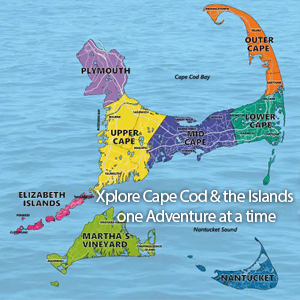Herring Runs
Herring Runs Migration to the Cape, Islands and Plymouth
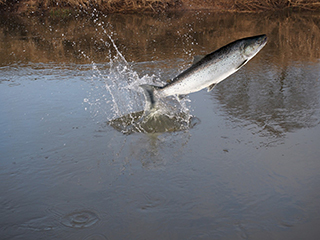
River herring runs on Cape Cod only happen once a year and are not to be missed! Nothing heralds spring quite like rushing brooks filled with silvery flashes of river herring heading upstream to spawn. Two species, alewife, and blueback are known collectively as river herring and are the stars of river herring runs on Cape Cod. These fish spend most of their lives in saltwater, swimming in large schools, feeding on plankton and trying to evade predators like striped bass, cod, tuna, bluefish, seals, whales, and dolphins. River herring venture into freshwater only to spawn in streams and ponds.
Herring is anadromous, meaning they live most of their lives in salt water but return to fresh water to reproduce. The river herring runs on Cape Cod and the Islands are made up of fish that spend most of their lives in Cape Cod Bay, Nantucket Sound, Pleasant Bay, Vineyard Sound, Buzzards Bay, and the broader Atlantic.
Buzzards Bay, Massachusetts
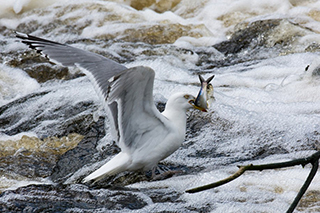
Carter Beal Conservation Area
Address: 20 Bournedale Rd (Buzzards Bay)
City/Town: Buzzards Bay
Description: Just a skip away from the Cape Cod Canal, explore both ancient and modern history in the landscape at Carter Beal Conservation Area. It’s a particularly interesting place to explore in spring, when you can watch river herring splash their way up the Herring River fish ladder, the site of a former grist mill built in 1695 – the first dam on the Herring River.
Bourne, Massachusetts
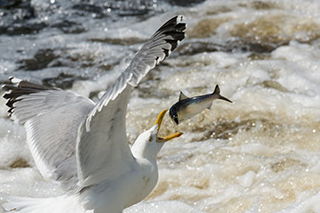
Herring Run Recreation Area
Address: Scenic Hwy, Bourne, Ma 02532
City/Town: Bourne
Description: Herring Run Recreation Area is an interesting destination because it offers clear views of a fish ladder, which was built to help migrating river herring swim upstream to spawn. Stop by this spot in spring, when you can watch herring make their way up the fish ladder.
Bournedale Herring Run
Address: 20 Bournedale Rd (Carter Beal Conservation Area, Buzzards Bay)
City/Town: Bourne
Description: After the Cape Cod Canal destroyed the natural herring run into Great Herring Pond, local engineers created an elaborate artificial watercourse (the Bournedale Herring Run) to allow mature herring to migrate back to their birthplace. Located at about the mid-point in the canal and with plenty of parking, this area is the most popular area to fish along the Cape Cod Canal. With the severe decline in herring stocks, this area is not as productive as it once was but doesn’t stop the crowds from gathering.
Falmouth, Massachusetts
Coonamessett River
Address: Falmouth, Ma 02536
City/Town: Falmouth
Description: The Coonamessett River in Falmouth was once one of the largest herring runs in New England, with millions of fish using it as a migratory route. Due to dams and other impediments, just 75,000 fish were counted in 2015. The three-mile river has recently undergone a significant restoration effort to support river herring and other species. You can walk there via the Matthew Souza Conservation Area hiking trail.
Wing Pond Woods
Address: 64 N Falmouth Hwy, Falmouth, Ma 02540
City/Town: Falmouth
Description: Hike, walk or jog the trails to view the bogs in the Autumn. In the Spring head toward the herring run where you may catch of river herring on their journey upstream.
Mashpee, Massachusetts
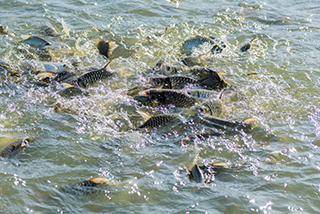
Mashpee Herring Run
Address: Rt 130 (Next to Mashpee Wampanoag Indian Museum)
City/Town: Mashpee
Description: Mashpee Herring Run connects Popponesset Bay with Mashpee Pond several miles away. This long herring run is a trek for the hundreds of thousands of river herrings that use this migration route every year. Those interested in this massive migration can watch the run from a lookout point on Route 130, close to the Mashpee Wampanoag Indian Museum. Because onlookers can park in the museum parking lot, Mashpee River is one of the most accessible herring runs on the Cape.
Santuit Pond Dam and Fish Ladder
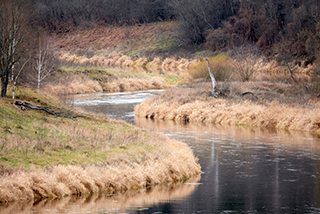
Address: Santuit Pond Reserve, Mashpee Ma 02649
City/Town: Mashpee
Description: Santuit Pond Dam and Fish Ladder once connected Popponesset Bay with Santuit Pond, although a dam completely separates the two bodies of water today. At this unique herring run, onlookers can watch herring climbing the fish ladder that bridges the dam and connects the river and the pond. Every year, tens of thousands of river herrings use the Santuit River migration route.
Eastham, Massachusetts
Eastham Herring Run
Address: Herring Brook Rd, Eastham, Ma 02642
City/Town: Eastham
Description: Eastham Herring Run connects Cape Cod Bay with Great Pond. During the herring run, onlookers gather at a convenient lookout point between Cole Road and Bridge Pond Drive on Herring Brook Road. As the fish make the half-mile journey from the bay to the pond, two culverts on the edges of the brook help guide them upstream. In 2019, more than 10,000 river herrings used the Herring Brook migration route.
Harwich, Massachusetts
Herring River Run
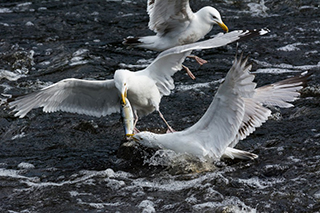
Address: Off Depot St (West Harwich)
City/Town: Harwich
Description: Harwich Herring Run connects Nantucket Sound with several bodies of freshwater, including those in the Bell’s Neck Conservation Lands. In the spring, volunteer counters and other onlookers gather at a lookout point just of Depot Street in West Harwich to watch the run. In 2019, almost a million river herrings passed through the fish ladder in Johnson’s Flume on Herring River in West Harwich.
Wellfleet’s Herring River
City/Town: Wellfleet
Description: Herring River connects Cape Cod Bay with small bodies of freshwater on the Outer Cape, including many in Cape Cod National Seashore. The Herring River estuary reaches four miles inland, giving river herrings access to Herring Pond and other critical spawning grounds. Onlookers can access Herring River from the hiking trail from Duck Harbor Road or watch the herring run from the lookout point where Duck Harbor Road and High Toss Road meet.
Plymouth, Massachusetts
Town Brook Herring Run
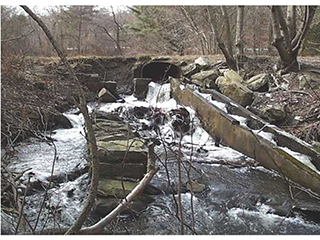
Address: 6 Spring Ln
City/Town: Plymouth
Description: Town Brook is host to an annual migration of river herring each spring. Herring migrates annually from their maturing habitat in the Atlantic Ocean, up these fresh-water rivers to spawn every year. Benches and an observation platform are located here and open to the public to enjoy the migration.
Brewster, Massachusetts
Stony Brook Herring Run
Address: Stony Brook Rd, Brewster, Ma 02631
City/Town: Brewster
Description: Stony Brook Herring Run connects Cape Cod Bay with a string of freshwater ponds that include Lower Millpond, Upper Millpond, and Walkers Pond. The lookout point on Stony Brook is located right on the stream, close to the historic Stony Brook Grist Mill. Onlookers can get up-close and personal with the herrings here, as they navigate the sloops into Lower Millpond. In 2019, more than 300,000 river herrings used the Stony Brook migration route.
Orleans, Massachusetts
Pilgrim Lake
Address: Herring Brook Road Conservation Land
City/Town: Orleans
Description: Pilgrim Lake in Orleans features a fish ladder dating back to 1865. Located on Herring brook Road, the ladder helps fish migrate through Pleasant Bay, Little Pleasant Bay, and into Lonnie’s Pond. It is also an eel migration route.
Cape Cod Herring Run: A Celebration of Spring Upstream
The river herring runs on Cape Cod are a tradition not to be missed and a perfect way to celebrate spring. Enjoy watching the fish fight their way upstream, avoiding gulls and obstacles or get involved as a citizen scientist, collecting data by counting fish at one of the many fish ladders and other sites of river herring runs on Cape Cod. The spring spawning run marks the turn of the seasons and has long drawn onlookers. The Wampanoag tribe traditionally caught the herring for food and bait, as did European settlers.
According to the U.S. Fish and Wildlife Service historical accounts report rivers turning silver with the sheer density of fish spawning each spring. Over the years river herring have been used for fertilizer, lobster bait, and as a food source.
These days visitors gather to watch the herring use fish ladders to navigate around dams, with volunteers counting the fish to monitor the population size, which has declined significantly in the last several decades.


